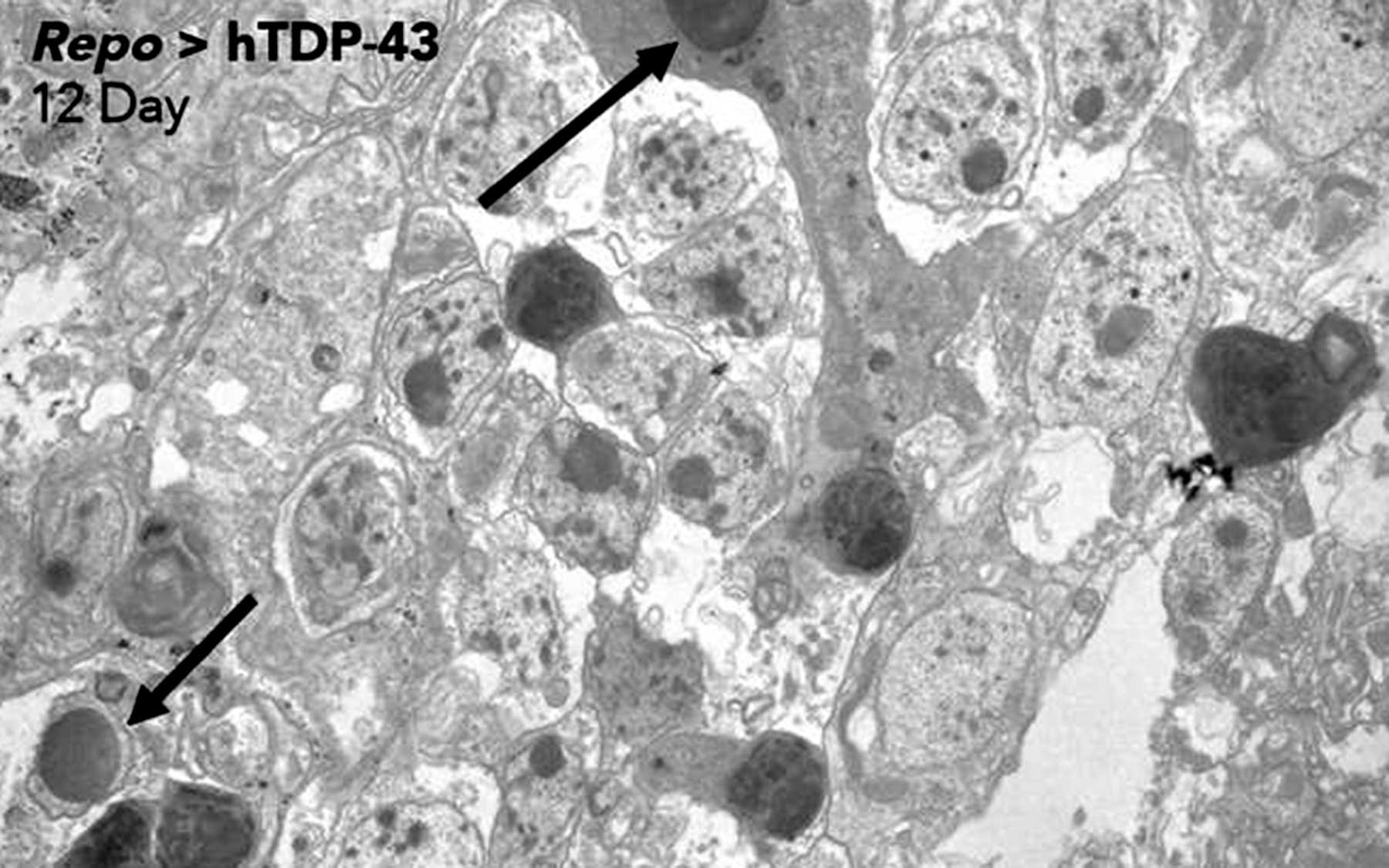Do genome-defending anti-transposon systems collapse in ALS patients?
Stony Brook and Cold Spring Harbor, NY — By inserting an amyotrophic lateral sclerosis (ALS)-linked human gene called TDP-43 into fruit flies, researchers at Stony Brook University and Cold Spring Harbor Laboratory (CSHL) discovered a potential role for transposons in the disease.
Transposons, which are also called jumping genes because they jump from place to place within the genome, are virus-like entities that fill much of the space between genes in an organism. The new research demonstrates that some transposons are no longer effectively inhibited, resulting in a storm of jumping genes, leading to DNA damage accumulation and cell death.
The research, published in the current issue of PLOS Genetics, may be a clue to the genetic processes of ALS and the idea that anti-transposon systems may collapse in ALS patients.
Transposon replication has evolved to the point where almost half of human DNA consists of these jumping gene sequences. But our cells have developed a highly effective immune-like system to stifle the replication of these moving genes in a vast majority of instances. Experiments using transgenic fruit flies were conducted by Josh Dubnau, Ph.D., Professor in the Departments of Anesthesiology and Neurobiology and Behavior at Stony Brook University, and Lisa Krug, Ph.D., during her thesis work at CSHL’s Watson School of Biological Sciences. Krug and Dubnau discovered that anti-transposon systems appear to collapse in brains of fruit flies that contain the ALS-linked human gene.
“The big question is whether the same effects take place in humans,” says lead author Dubnau. “If continued research reveals the same is true for humans, it would suggest clinical strategies to stop the ‘jumping genes’ from going wild.”
Dubnau and Krug engineered the fruit flies to contain TDP-43. This gene caused the fruit flies to experience a progressive loss of movement and premature death, both seen in people with ALS. They studied the brains of the fruit flies, in collaboration with Dr. Molly Hammell and colleagues at CSHL. The team found that not only were certain transposons not inhibited and triggered a storm of the jumping genes, but one fly transposon called ‘gypsy’ appeared to be the lead culprit. By deactivating gypsy, cell death stopped and the lifespan of the mutant flies improved.
Humans do not have the gypsy transposon but do have a similar one in the gypsy family called HERV-K. Previous research has revealed some ALS patients post-mortem had elevated levels of HERV-K.
The next step for the research team is to determine whether jumping genes are similarly activated in ALS patient tissue, and to determine whether they contribute to disease progression.
“Retrotransposon activation contributes to neurodegeneration in a Drosophila TDP-43 model of ALS” was published March 16, 2017 in PLOS Genetics. The authors are: Lisa Krug, Nabanita Chatterjee, Rebeca Borges-Monroy, Stephen Hearn, Wen-Wei Liao, Kathleen Morrill, Lisa Prazak, Nikolay Rozhkov, Delphine Theodorou, Molly Hammell and Joshua Dubnau.
Written by: Greg Filiano, Stony Brook University | 631.444.9343
About Stony Brook University
Since its founding in 1957, Stony Brook University has grown to become one of only four University Center campuses in the State University of New York (SUNY) system with more than 25,700 students, 2,500 faculty members, and 20 NCAA Division I athletic programs. As part of the management team of Brookhaven National Laboratory, the University joins a prestigious group of universities that have a role in running federal R&D labs. Stony Brook University is a driving force in the region’s economy, generating nearly 60,000 jobs and an annual economic impact of $4.65 billion.
Principal Investigator

Molly Gale Hammell
Associate Professor
Cancer Center Member
Ph.D., Dartmouth College, 2003
